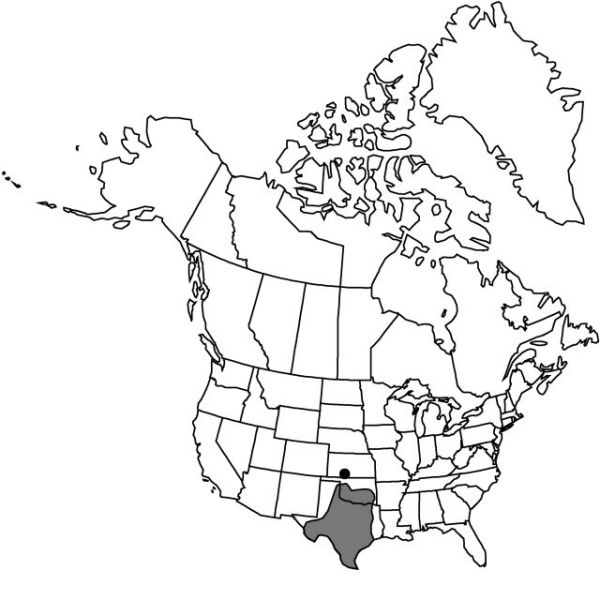Sisyrinchium ensigerum
Bull. Torrey Bot. Club 28: 580. 1901.
Herbs, perennial, cespitose, olive green to yellowish bronze when dry, to 3.2 dm, occasionally glaucous. Stems branched, with 1–2 nodes, 1.9–4.8 mm wide, glabrous, margins variously serrulate, denticulate, or entire, similar in color and texture to stem body; first internode 2.6–19 cm, shorter than leaves; distalmost node with 2–3 erect to arcuate branches. Leaf blades glabrous, bases not persistent in fibrous tufts. Inflorescences borne singly; spathes green, obviously wider than supporting branch, glabrous, keels entire to denticulate; outer 15–24.5 mm, 1.4 mm shorter to 2.2 mm longer than inner, tapering evenly towards apex, margins basally connate 2.5–4.5 mm; inner with keel evenly curved, hyaline margins 0.3–0.6 mm wide, apex broadly acute to obtuse or lobed, 0.8 mm shorter to 0.4 mm longer than green apex. Flowers: tepals blue to light bluish violet, bases yellow; outer tepals 8–15 mm, apex rounded to occasionally slightly emarginate, aristate; filaments connate ± entirely, stipitate-glandular basally; ovary similar in color to foliage. Capsules light to dark brown, obovoid to ± globose, 3.8–5.3 mm; pedicel erect to spreading. Seeds globose to obconic, with slight depression on one side, 1–1.5 mm, rugulose. 2n = 32.
Phenology: Flowering spring.
Habitat: Sandy roadsides, meadows, prairies
Elevation: 0–300 m
Distribution

Kans., Okla., Tex., ne Mexico.
Discussion
Selected References
None.